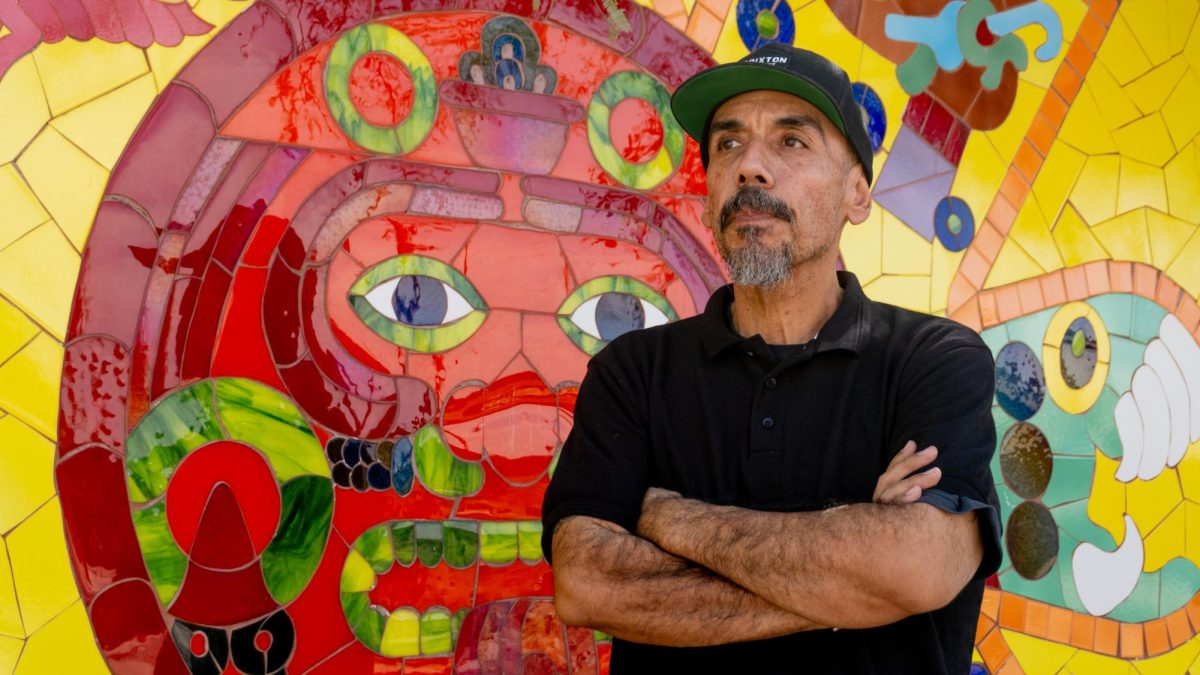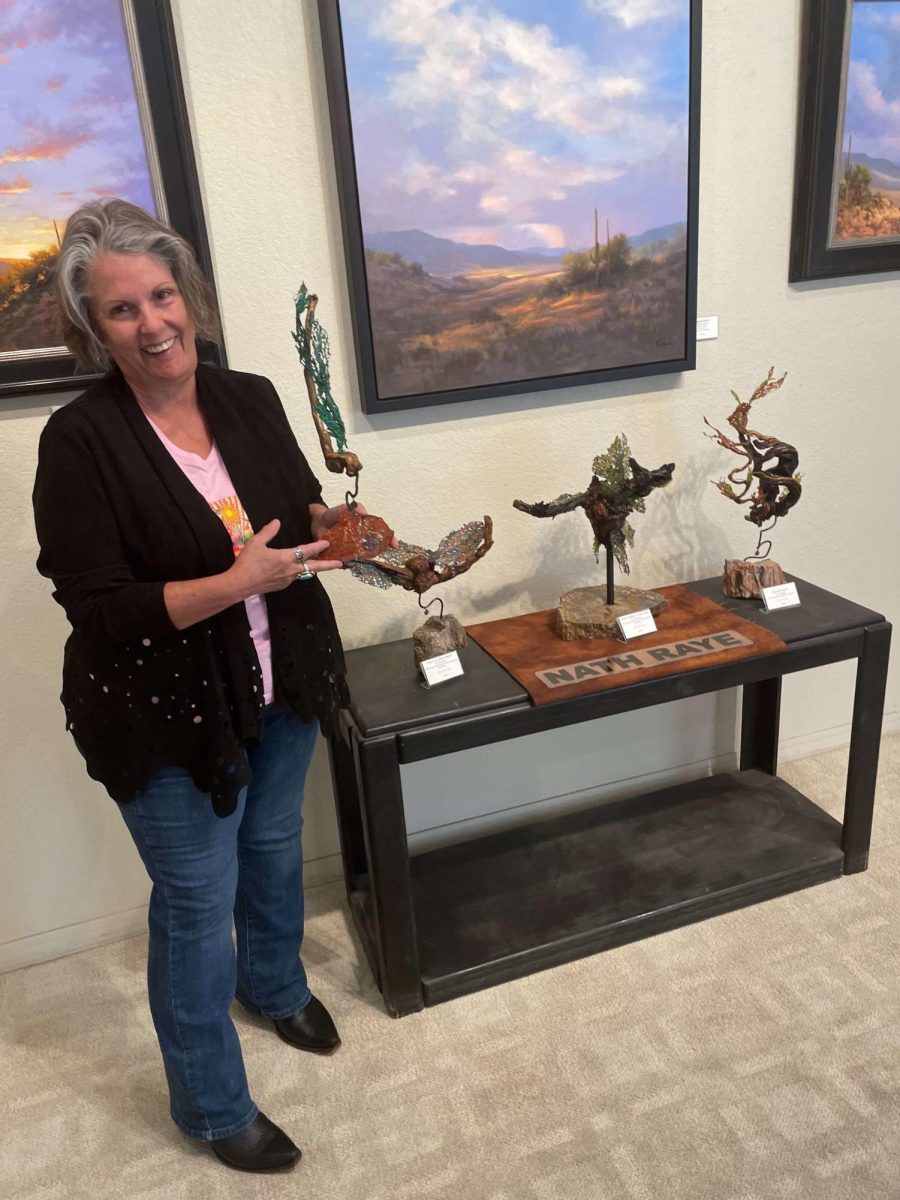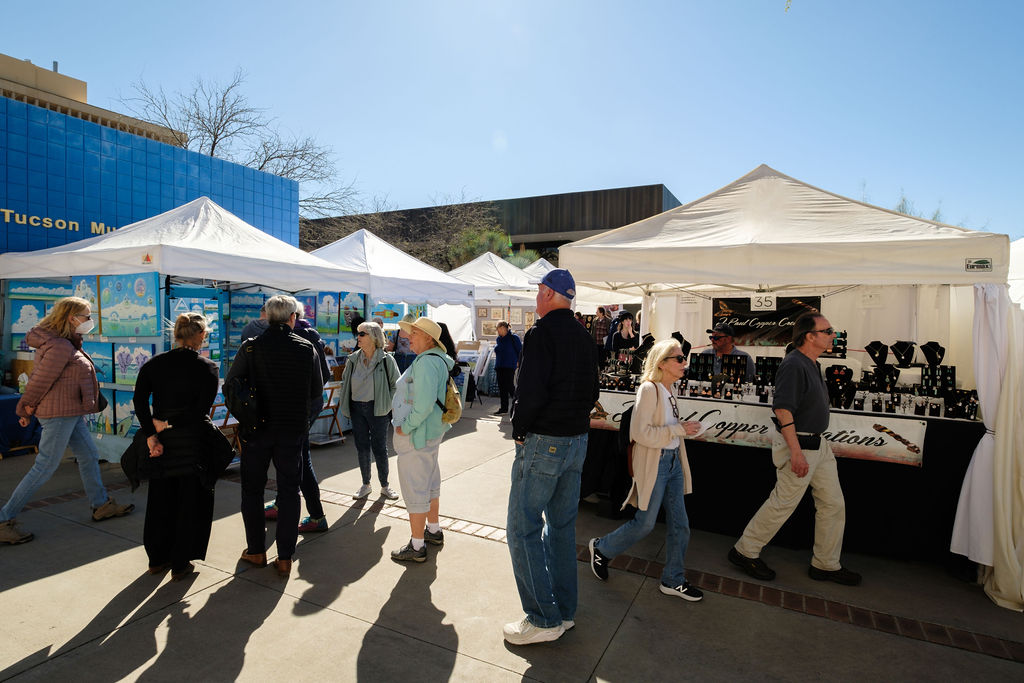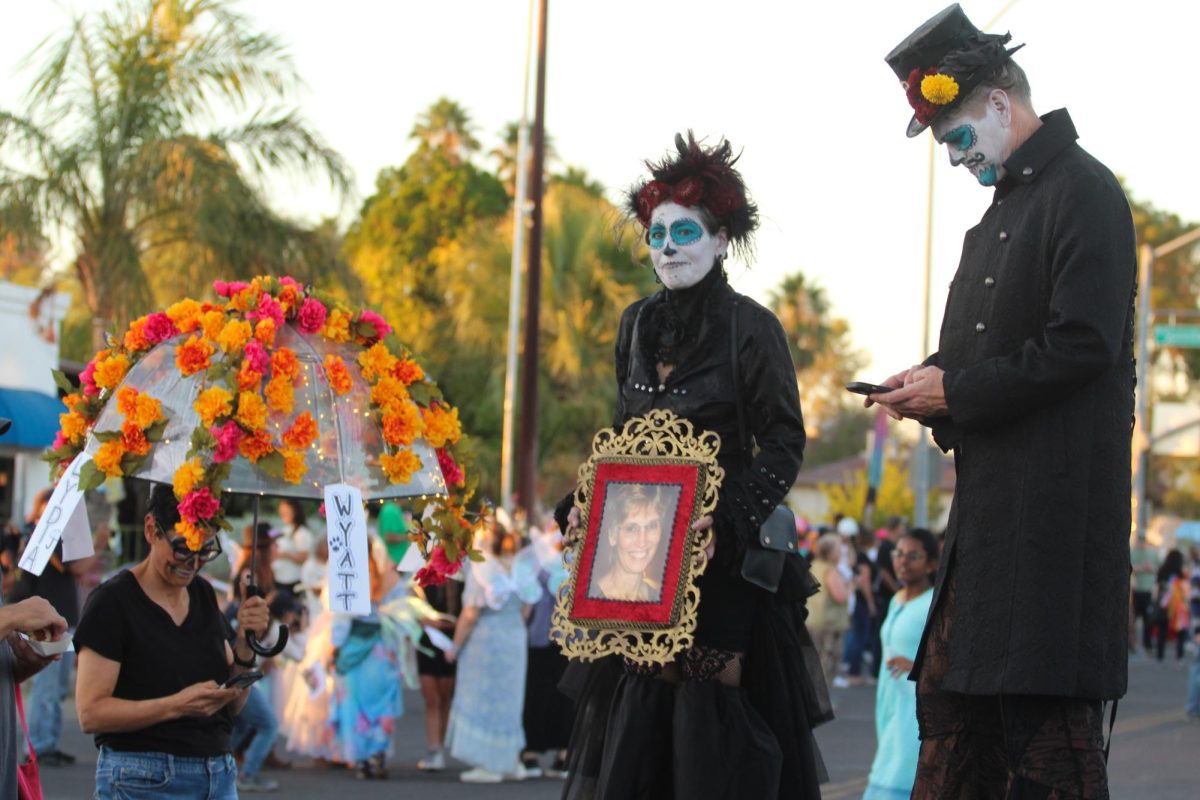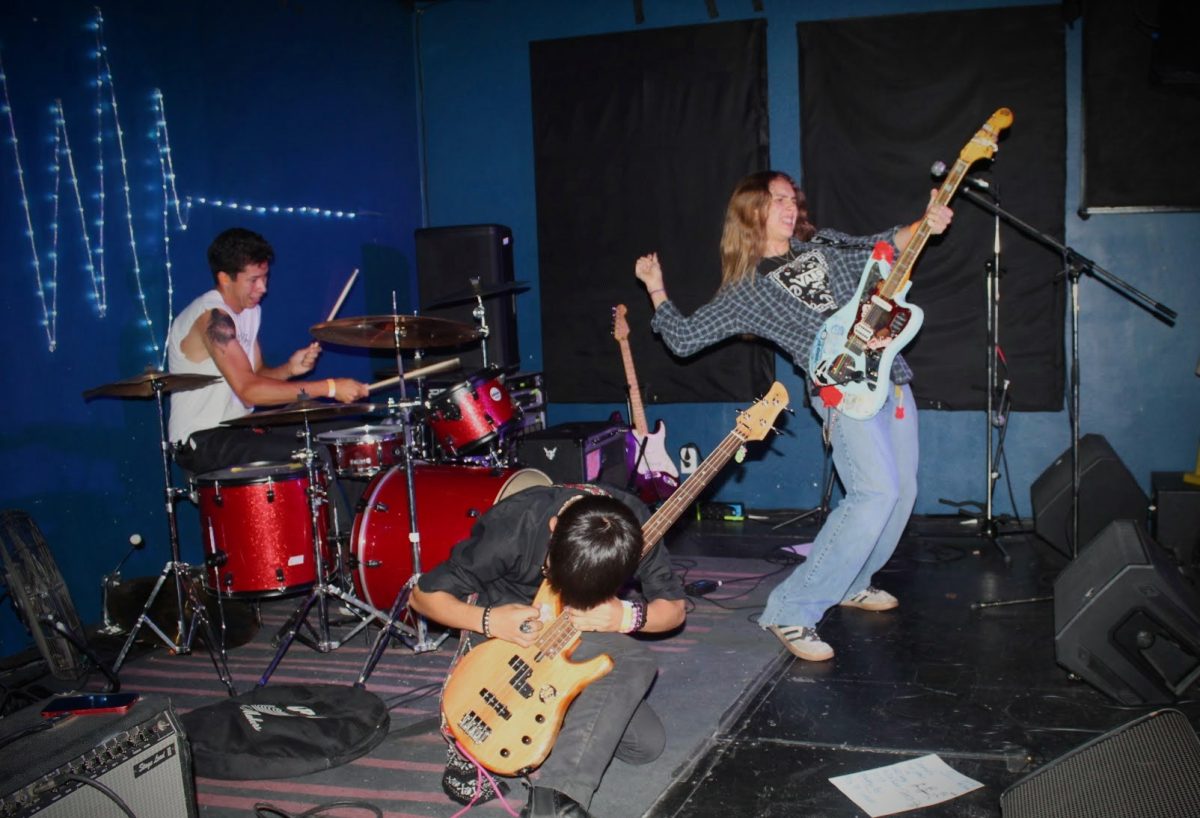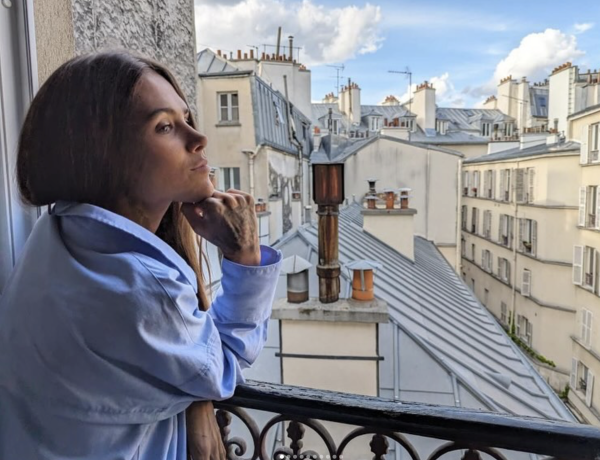For more than three decades, muralist Carlos Valenzuela has given voice to South Tucson’s rich history with his colorful tile murals.
But this fall, facing $20,000 in medical bills and the possibility of losing his home, it was Valenzuela who needed help.
So he turned to GoFundMe, asking for $5,000.
He wasn’t expecting much.
Two weeks later, the community had pitched in $5,827.
Valenzuela will use the money to pay off his debts and repair the roof of his backyard workshop, where he mentors at-risk youth.
His financial dire straits came after severe liver issues landed him in the hospital for weeks. He is still recovering.
“It was my last resort after severe liver issues that hospitalized me for weeks, leaving me still in recovery,” said the artist, who partnered local tattoo artist Jennifer Dwyer to create the UoA Main Library’s stairwell in March.
Roots run deep
In Barrio Hollywood, the small adobe house where muralist Carlos Valenzuela grew up is now in ruins.
“My Mexican grandfather built this casita and my Yaki abuela would sell her tortillas right there, under that tree, but a car crashed into the house, and now it’s hard to fix those: the knowledge was lost,” he said, walking around the home.
Valenzuela was born into a Tucson family with deep roots; his grandfather laid the foundations for some of Tucson’s first adobe homes. Valenzuela’s life and work are deeply connected to the desert and neighborhoods of the town. They paint a picture of both personal struggle and communal triumph, with that extra “LA” touch he brought up from his California childhood.
“We moved to South Central LA at a very young age with my mom after my parents’ divorce,” he said. “It was known for its gangs, but the biggest violence was police brutality. They’d storm in with force, and if you were undocumented, they’d deport you without blinking.”
Valenzuela said such targeted enforcement created an atmosphere of fear and mistrust within the community, leaving lasting scars on families that felt the weight of institutional bias against them.
“The murals are there to heal those wounds, too,” he said, and served as public testimonies of struggle and pride.
“My first mural memory is that Che Guevara painting where you would read ‘We are NOT a minority.’ I didn’t know who he was, nor what a minority was, but I felt like the message was meant for me,” he recalled.
Thanks to the murals, Carlos learned about his Indigenous and Chicano history.
“We learned that our ancestors were also scientists, doctors, etc. And that changed the understanding of our identities,” he said. “Before, we greeted each other with ‘what’s up, puto?’ and now it’s ‘what’s up, Mexica?’ and that is in part thanks to the murals.”

Valenzuela in front of his house, where he placed a tile mural of the Guadalupe virgin at the entrance.
The house of his dreams
When he returned to Tucson to finish high school, Valenzuela moved with his family into the same Barrio Hollywood house that is now crumbling. He dreamed of buying one when he got older, “but they didn’t offer financing for those adobe houses,” he said.
In the early 2000s, Carlos saw an opportunity to buy a home in town to raise his three kids.
“I bought it for $75,000,” he recalled, walking through the front yard where his two sweet pitbulls were playing.
It was a fixer-upper, but it was his. At the time, the area still felt affordable; “people like me could actually buy a home,” he said. Now, the house is worth a quarter of a million dollars, a testament to the socio-demographic mutations that have reshaped the area.
Barrio Hollywood and South Tucson, like many traditionally working-class areas in the country, have seen rapid change in recent years. As home prices in Tucson continue to rise —up 7% in the past year, according to Zillow— longtime communities have increasingly found themselves at odds.
For Valenzuela, “gentrification is a big monster.”
“Buyers from out of town come with money and pay ridiculous prices for properties, and our communities are being diluted,” he said. “Some old people die from the depression it causes. It’s not just buildings. Those are human lives.”
Valenzuela said he was taught by his mother to consider building community as “caring of one another.”
“Immigrants come to the USA and they meet a system that disconnects people from their language, from their culture, but they have this space of kindness, connection, common struggle,” he said.

Mary’s Lucky Dollar was a famous gem in South Tucson, “one of the region’s least-refined restaurants, but how cheap and flavorful,” said Valenzuela.
A cherished and respected community leader
For his longtime friend Daniel Buckley, a former culture writer for the Tucson Citizen, “what Carlos has done is more than art.” Murals in South Tucson, he said, serve as symbols of transformation, particularly in neighborhoods like the one where Valenzuela lives, that have experienced high crime rates in the past.
“South Tucson is not the same place it was back then [1990s], and Carlos is a big part of that,” he added.
In 30 years, Valenzuela has helped establish several workshops, pulling in kids on probation or from juvenile detention centers.
“It’s all about transmission. Between 17, when I started doing murals, and 20 years old, I had the privilege to have two mentors. Linda Haworth, who taught me how to use the oven for the ceramics and prepare the glass, and Alex Garza, who initially had to teach me to sculpt but ended up being my collaborator,” he said.

Carlos Valenzuela stands in front of Las Artes Learning Center, where he was an educator for 13 years.
With Tucson sculptor Alex Garza, Valenzuela began providing opportunities for local youth from communities of color to paint murals using an innovative material that withstands the extreme conditions of the desert.
“Some of my students didn’t know how to draw when they arrived. They end up doing entire murals,” he said.
That’s how the educational program Las Artes Youth started in 1996 with Garza and the Xtrum collective.
“We began knocking on the door(s) of politicians to secure a space that would keep our youth off the streets or allow them to take another path and get their GED,” Valenzuela said. “We talked to them about Martin Luther King, about human rights. It shifted the perception they had about themselves.”
The program did not keep regular statistics at that time, but Valenzuela remembers the graduation celebrations he held for 13 years, the time he dedicated to this still existing program.
“Teaching in Las Artes is among my happiest memories, ” he said. “Then Alex and I traveled to San Francisco, where we installed the largest Tonalmachiotl in the world, and to Los Angeles, in Watts, a Black and Hispanic neighborhood of Los Angeles, where we began painting the freeway columns with colors.”
This idea of reclaiming narratives and spaces shaped his work in Tucson, where Carlos focused on helping youth tell their history through art.
During two decades in the Pascua Yaqui reservation, alongside local youth, he helped them create murals that spoke to their indigenous roots and Chicano heritage.

Valenzuela in the house he bought for his family and himself in the early 2000’s, full of Mexican heritage objects and community memories.
‘It was the community saying we’ve got your back’
Buckley acknowledged that Valenzuela may not have realized how much he meant to those communities he’s been part of, until recently.
After facing a decline in jobs due to the pandemic, the artist began battling a pancreatic illness that caused his dramatic weight loss. Like 16% of adults of working age in the United States, the self-employed artist lacks health insurance. There were no more pandemic-era subsidies that lowered the cost of health insurance for many, especially in states that did not expand Medicaid under the Affordable Care Act. As a result, millions of Americans face the threat of medical debt, particularly those like Valenzuela who incur high out-of-pocket expenses and have insufficient insurance coverage.
“The bills just kept piling up,” he said. “I work by contract and sometimes I have to wait several months before delivering a piece and getting paid.”
When his medical debt nearly cost him his home, he decided to launch the crowdfunding campaign on GoFundMe as a last resort, right after the beginning of Hispanic Heritage Month in mid-September. He posted it with a video where he appears as he is, real as he can be.
The $5,000 goal came in chunks of small donations, $5 or $10 at a time, but by the end of the month, it added up to a lifeline for Valenzuela.
“It means a lot; it was the community saying, ‘We’ve got your back.’ One people at at time” said Buckley.
Indeed, when he posted his friend’s public call on his Facebook profile with some images of his work, people began to comment, “Oh, that guy! Of course we know him!” recognizing his work throughout the city, from the “Talking Tree” or “La Madre” on East Alameda Street that he created with local Menlo Park native artist Racheal Rios to his most popular “Tattoo Mural” in South Tucson.
Thanks to them all, Valenzuela’s house remains his and standing, a reminder that buildings may crack, but communities, when they come together, can hold them up.
Recently, potential buyers approached the muralist about purchasing his home, admiring the “pretty mural of the Virgen de Guadalupe” on the outside.
“For them, it’s an investment. For me, it’s memories. My kids grew up here.” Valenzuela said resolutely. “I’d rather lose it and burn it myself before selling it.”
Arizona Sonoran News is a news service of the University of Arizona School of Journalism.

Valenzuela, standing in his home-turned-atelier, shares his story with reporter Flo Tomasi, surrounded by paints, tools, and creations that fill every corner, embodying a life dedicated to art and community.



